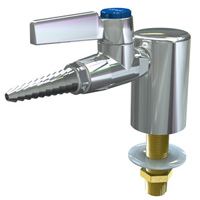| The Home page of ILPI's Safety Data Sheet (SDS) Resource, the leader in SDS information since 1995! | |
| The history and philosophy behind this resource. | |
| A curated collection of books and reference materials concerning Safety Data Sheets and closely related topics. | |
| Paste your plain text SDS into the SDS-Demystifier, and it will be converted into a hypertext-enriched document with links to detailed explanations of each key term. | |
| An extensive list of frequently asked questions about Safety Data Sheets including regulations, content, compliance, and more. | |
| A humorous take on Safety Data Sheet jargon. Fill in the blanks on our entry form to generate a personalized Unsafety Data Sheet to share with your coworkers. | |
| Since 1995, we've maintained this massive curated list of the best places to find Safety Data Sheets on the Internet. | |
| You are here! Way more than a glossary, this hypertext-enhanced resource covers hundreds of SDS-related terms and expert knowledge. Each entry includes both the SDS relevance and links to additional authoritative resources. | |
| Archived results of Safety Data Sheet related polls taken by some of our millions of site visitors | |
| The OSHA regulations behind SDS regulations, including the inspection guidelines and over 400 official interpretations letters under the Hazard Communication Standard | |
| Commercial suppliers of SDS authoring and management software as well as cloud compliance services. | |
| Commercial companies that will create SDS's for your specific needs as well as SDS translation companies. |

Safety signs, banners, and scoreboards? Get yours at Safety Emporium!
Definition
Hypoxia is a deficiency of oxygen in inspired (inhaled) gases or in arterial blood and/or in the tissues.
This is closely related to anoxia, which is a complete lack of oxygen in the tissues. One can think of anoxia as the most severe case of hypoxia.
Additional Info
Various forms of hypoxia are recognized. These include:
- Anemic hypoxia - results from a decreased concentration of hemoglobin.
- Cerebral hypoxia - results from a decrease in oxygen supply to the brain even though there is adequate blood flow.
- Hypoxic hypoxia - results from defective oxygenation of the blood in the lungs.
- Ischemic hypoxia - results from slow peripheral circulation (also called stagnant hypoxia). This condition is not uncommon following congestive cardiac (heart) failure.
- Altitude sickness - nosebleed, nausea or pulmonary edema experienced at high altitudes.
The most common symptom of hypoxia is cyanosis, a bluish cast to the skin, lips and/or fingernails. Cyanosis is harder to observe in dark-skinned people. The best places to look in this case are in the buccal mucosa (inside of the cheek) and hard palate (roof of the mouth).
SDS Relevance
Hypoxia and related terms most commonly appear on Safety Data Sheets as a symptom of exposure in Section 11 (toxicological information).
If your body isn't getting oxygen, you die. Make sure you recognize cyanosis when you see it. If working in an enclosed space or with an asphyxiant, move to a well-ventilated area if you become light-headed, weak or disoriented.
Be sure you understand the dangers of carbon monoxide in the home and workplace. This nasty, invisible, odorless, colorless, gaseous poison can cause hypoxia and death!

Safety Emporium has gas cylinder signs, racks, carts, clamps, lockouts and more to ensure your workers' safety.
Further Reading
- Cerebral Hypoxia Information Page at the National Institute of Neurological Disorders and Stroke.
- Cerebral hypoxia at the NIH's MedLinePlus Medical Encyclopedia.
- Peripheral Cyanosis (Blue Hands and Feet) at Healthline.
- Altitude Illness in the Merck Manual Professional version. The Consumer version is also available.
- The High Altitude Medicine Guide by Thomas E. Dietz, MD.
- Hypoxia can also refer low levels of dissolved oxygen in lakes, rivers or the occean. See the EPA's Mississippi River/Gulf of Mexico Hypoxia Task Force site for more information.
See also: air, anesthesia, anoxia, asphyxiant, cyanosis.
